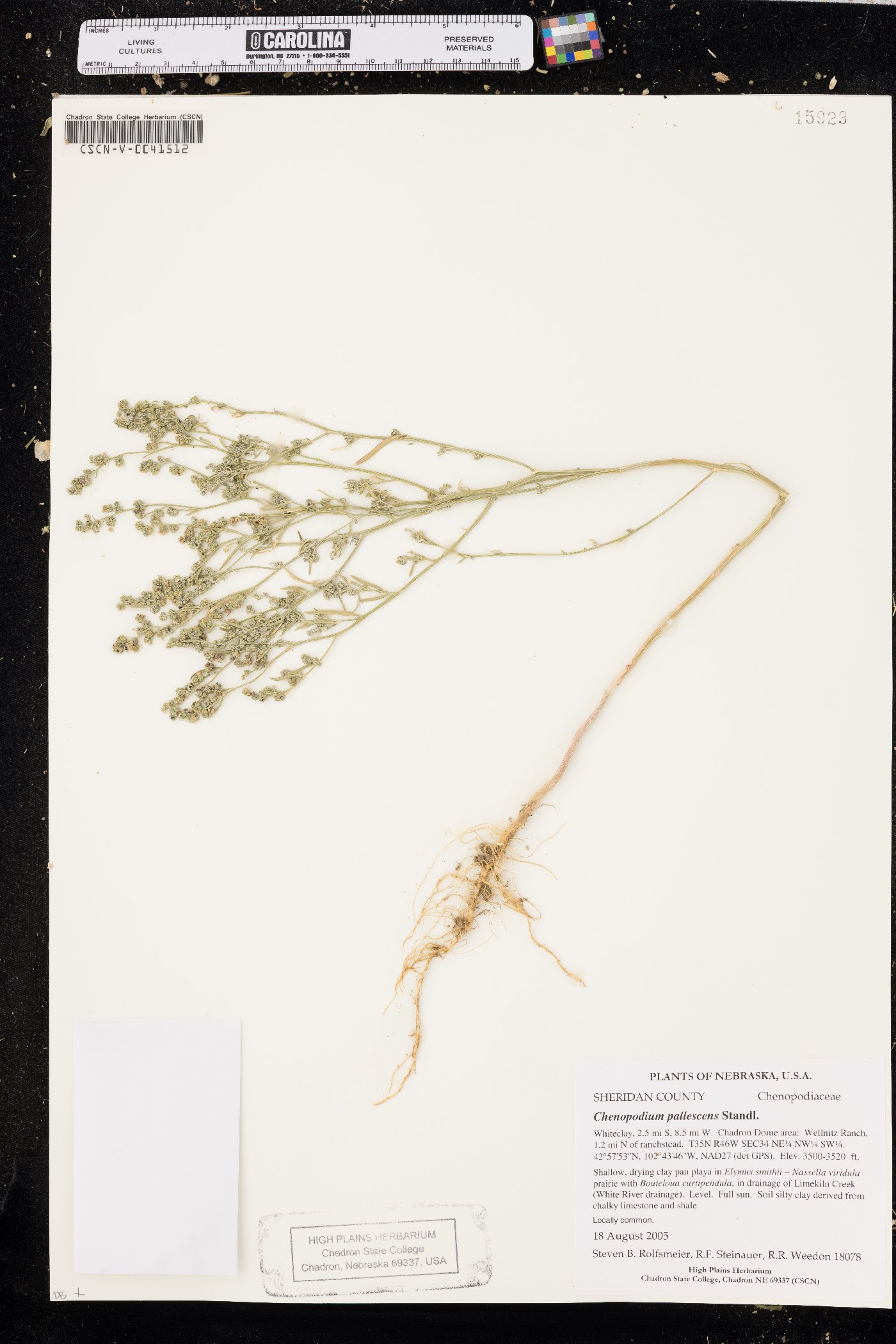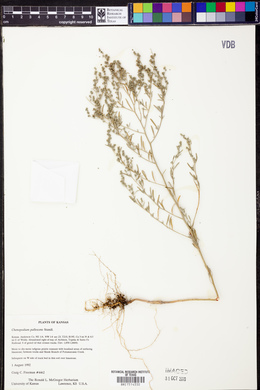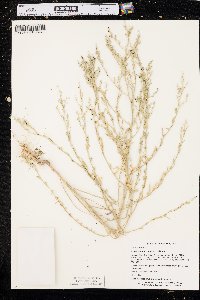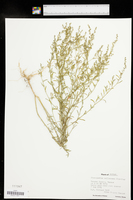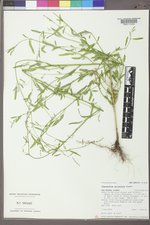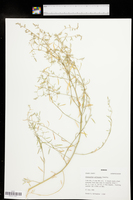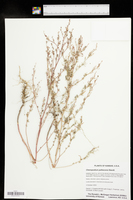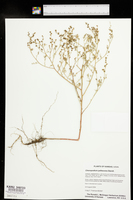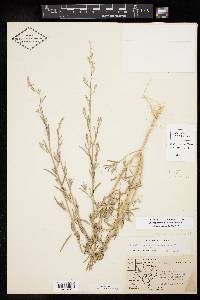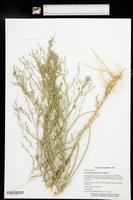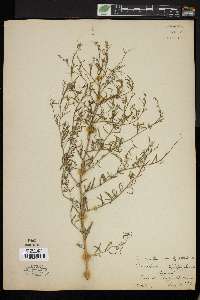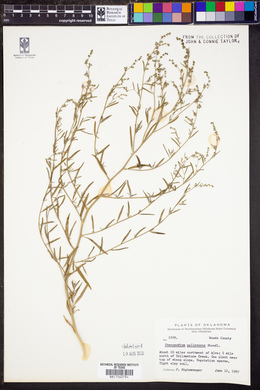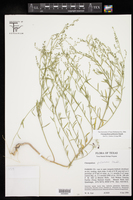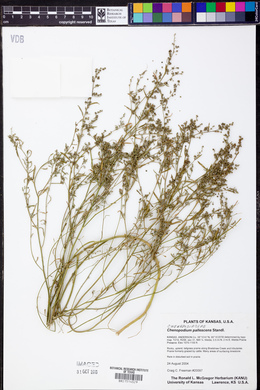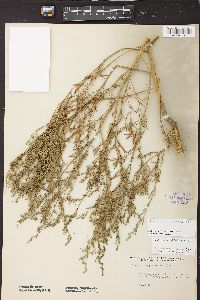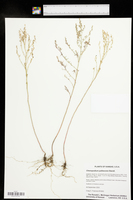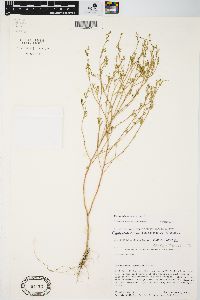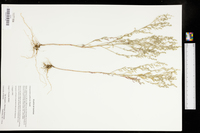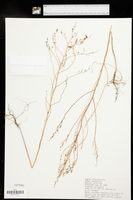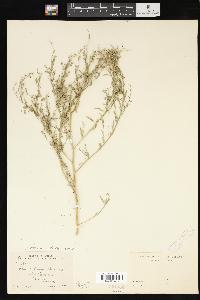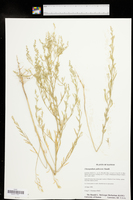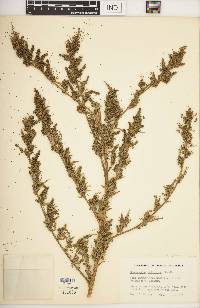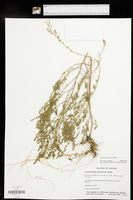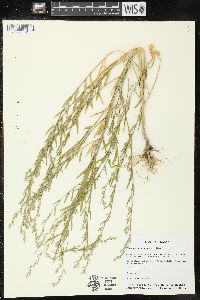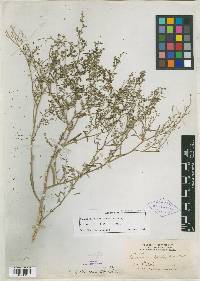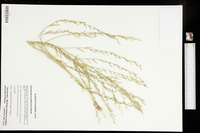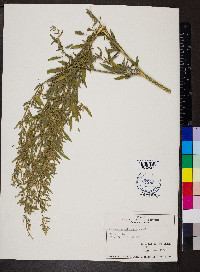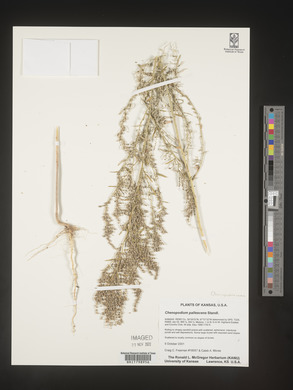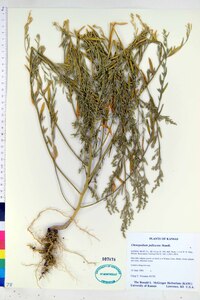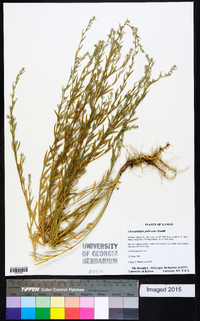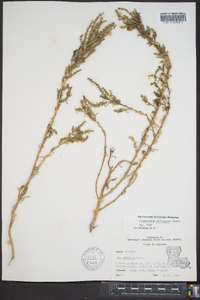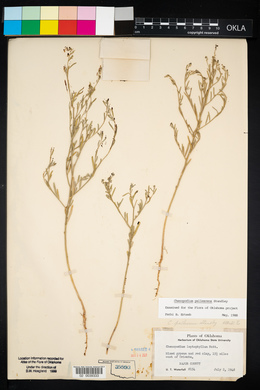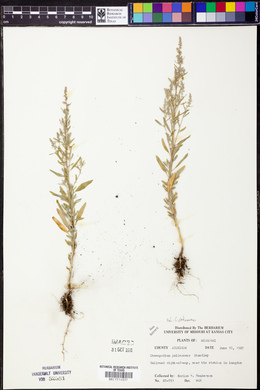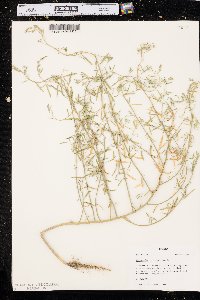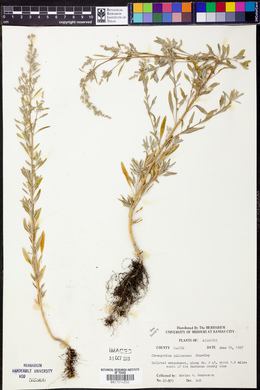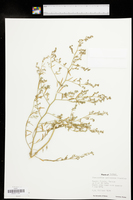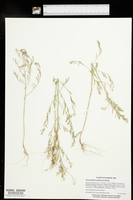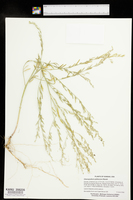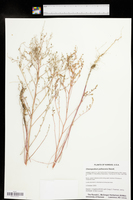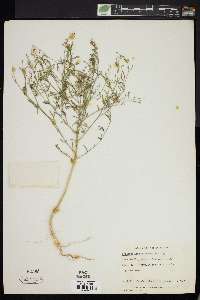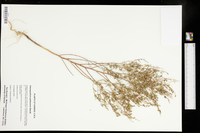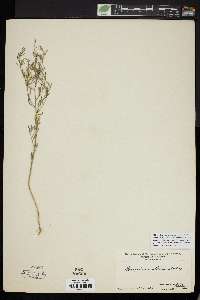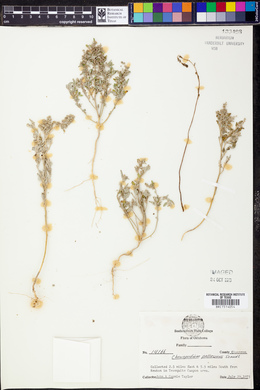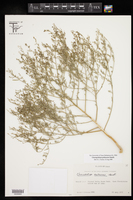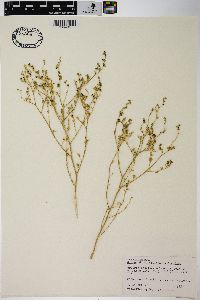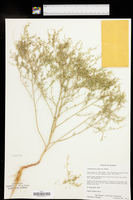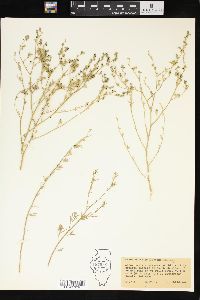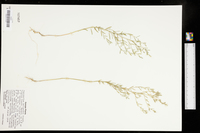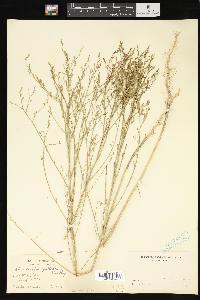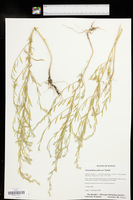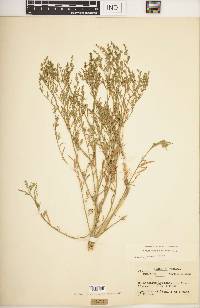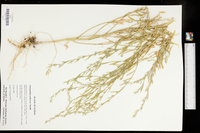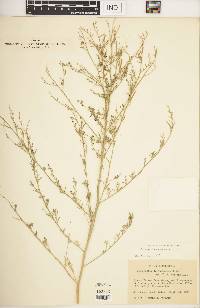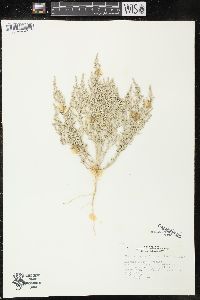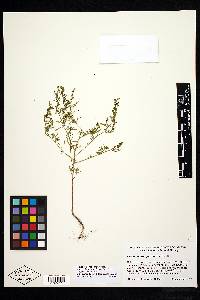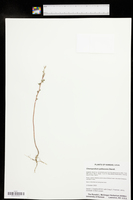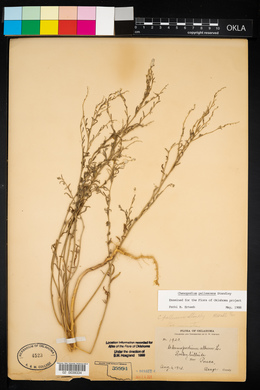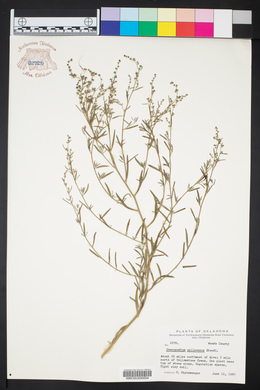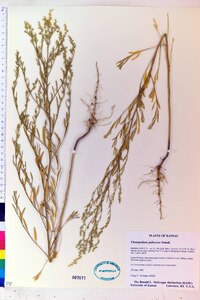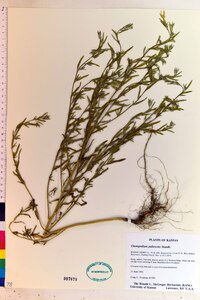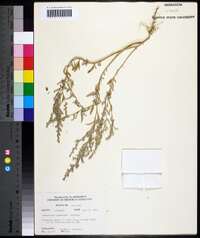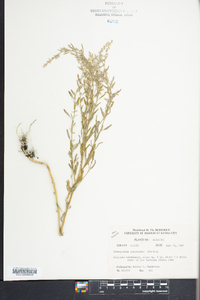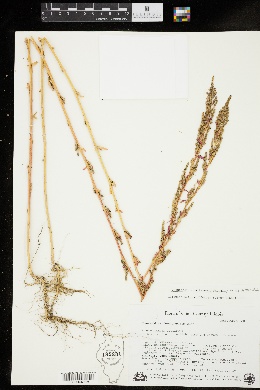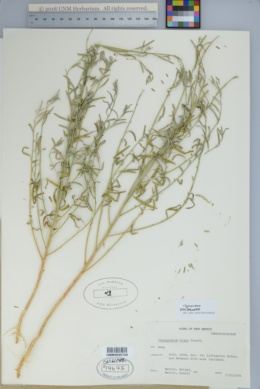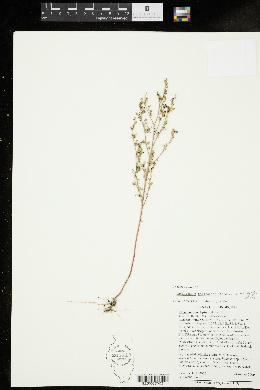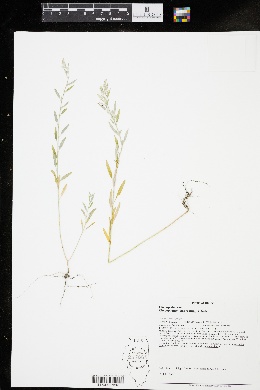Chenopodium pallescens
|
|
|
|
Family: Amaranthaceae
Slim-Leaf Goosefoot
|
Stems erect, much-branched from shortly above base, 3-6.5 dm, glabrate or sparsely and finely farinose; branches ascending to spreading. Leaves nonaromatic; blade linear, 1-veined, 1-3.5 × 0.1-0.3 cm, somewhat fleshy, cuneate, margins entire, apex obtuse to acute, glabrate or sparsely farinose abaxially. Inflorescences glomerules in terminal and axillary panicles or cymes of spikes, 4-9 × 5-9 cm; glomerules widely spaced, maturing irregularly; bracts leaflike. Flowers: perianth segments 5, distinct nearly to base; lobes ovate, 0.9-1.1 × 0.9-1.1 mm, apex acute to rounded, carinate, slightly farinose, completely enclosing fruit; stamens 5; stigmas 2, 0.1 mm. Achenes ovoid; pericarp adherent, black, finely tuberculate. Seeds round, 1.4-1.6 mm diam., margins rounded; seed coat black, rugulate. 2n = 18. Fruiting early-late summer. Open stony or sandy wastelands; 200-1100 m; Ark., Ill., Ind., Kans., Mo., N.Mex., Okla., Tex. Annual herb 30 cm - 0.65 m tall Stem: upright, much-branched from near base, smooth to sparsely and finely white-mealy. Branches spreading to ascending. Leaves: alternate, stalked, 1 - 3.5 cm long, 1 - 3 mm wide, linear with a tapering base and blunt to pointed tip, one-veined, somewhat fleshy, smooth to sparsely white-mealy beneath. Inflorescence: a small cluster of flowers (glomerule), which together form spikes or branched inflorescences (panicles) that are 4 - 9 cm long and 5 - 9 cm wide. Flowers: greenish, small, with five nearly distinct sepals and no petals. Sepal lobes about 1 mm long and wide, egg-shaped with a blunt to rounded apex, keeled, slightly white-mealy. Stamens five. Stigmas two. Fruit: one-seeded (achene), surrounded by the persistent, spreading sepals, black, egg-shaped, thin-walled. Wall (pericarp) adhered to the seed. Seed horizontal, black, shiny, 1.4 - 1.6 mm wide, spherical, round-margined. Similar species: No information at this time. Flowering: June to September Habitat and ecology: Black Oak savannas, railroad ballast, and sandy waste ground. Occurence in the Chicago region: native Etymology: Chenopodium comes from the Greek words chen, meaning goose, and podion, meaning "little foot," referring to the leaf shape of some species. Pallescens means "becoming rather pale. Author: The Morton Arboretum From Flora of Indiana (1940) by Charles C. Deam ...... Indiana Coefficient of Conservatism: C = 3 Wetland Indicator Status: UPL Diagnostic Traits: leaves mostly linear, one-veined, somewhat fleshy and farinose; sepals 5, covering the fruits; fruits horizontal; seeds 1-1.5 mm wide, smooth, shiny, black. |

